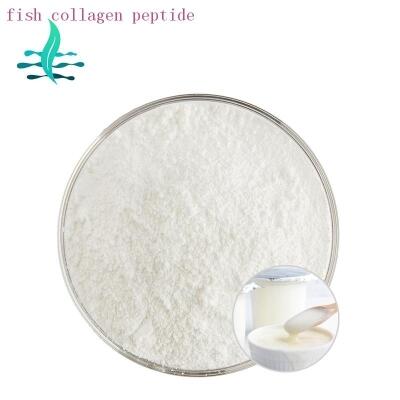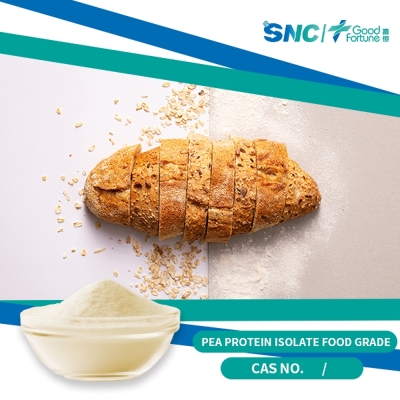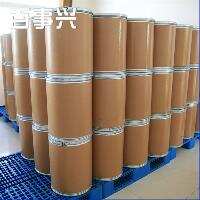Difficult to compete with Asian producers European amino acid map "change face"
-
Last Update: 2020-07-03
-
Source: Internet
-
Author: User
Search more information of high quality chemicals, good prices and reliable suppliers, visit
www.echemi.com
the European amino acid market is also growing as interest in fortified foods growsAccording to a new report published by market research firm Frost and Sullivan, the European amino acid market was $1,357.7 million in 2005 and is expected to reach $1,944.3 million by 2012, and its use in the health sector will play an important role in this developmentin recent years, the field of amino acids has developed a number of important technologies, such as feed-grade amino acid microcapsuleization technology and the development of amino acid dipolymers for health care food, these technologies for the development of amino acid market has brought more opportunities, and further solidified the application of amino acidsThe development of amino acid dipolymers makes them more suitable for use in the food field, as they are more stable in aqueous solutions and are more soluble than a single amino acid, and microcapsuleizing technology is also important for the development of the European amino acid market, as this technology can help prevent the degradation of amino acids, thereby greatly increasing the yield of amino acids used in ruminant feedmore and more scientific studies have demonstrated the benefits of amino acids, making them widely used in different applicationsHowever, safety concerns about food additives and high prices remain the two main factors impeding the development of the European amino acid marketFor example, il-ptophan, which is not sufficient lysing, has been linked to erythropoietin-myopathy syndromeIn 1990, tryptophan, a natural relaxant, was banned in Europe, but was lifted in the UK in 2005 as long as it met the purity standards set by the European Pharmacopeiain general, the European amino acid market is likely to grow at a CAGR of 5% in the next few years, with the animal feed industry generating the largest sales revenueanimal feed accounts for 60 per cent of the European amino acid market, about 30 per cent in food and beverages and 10 per cent for other uses such as pharmaceuticals and dietary supplementsAs Asian producers, especially from China, enter the European amino acid market, some European producers are finding it increasingly difficult to compete with cheap amino acids imported from AsiaArthi, a research analyst at Frost and Sullivan, points out that amino acids from Asia are not only cheap, but also of comparable quality to European productsFor example, arginine is an important amino acid for muscle growth and tissue repair and other uses, with the average price of Chinese products ranging from 8 to 10 euros per kilogram, while European products cost between 12 and 13 euros per kilogramThere are already more and more Chinese manufacturers can produce products of comparable quality to European productsArthi points out that in this case, European companies should take the market initiative and consider forming joint ventures with local manufacturers in Asia so that they can organize production and sales in a low-cost environmentAcquisitions of Asian companies or joint ventures with Asian companies will not only solve the problem of production costs and help Western companies expand their market share, but will also help them expand their market share in other markets, some of the larger Western companies such as Ajinomoto, Kyowa Hakko, DeGussa, ADM, BASF and Adessio have already taken a share of the market in the European amino acid marketIn fact, working with China has become a strategy adopted by some Western vitamin manufacturersIn 2005, for example, DSM reached a joint venture agreement with China PharmaceuticalS to improve the profitability of its nutrition business and opened a laboratory at Fudan University in Shanghai to develop new methods for the production of vitamins, carotenoids and food ingredientsMeanwhile, BASF's announcement that it will close its vitamin C production plant in Denmark highlights price pressures from Chinese products and marks the end of BASF's history of producing vitamins in EuropeIn order to overcome the pressure of market competition, Degusay has taken the lead in taking action with Shandong Kaiseri Bio-Tech Co., Ltdto enter into a joint venture to produce feed-grade L-lysine agreementThe joint venture plant is expected to triple production capacity to 120,000 tonnes by 2007European amino acid market is also growing as interest in fortified foods growsAccording to a new report published by market research firm Frost and Sullivan, the European amino acid market was $1,357.7 million in 2005 and is expected to reach $1,944.3 million by 2012, and its use in the health sector will play an important role in this developmentin recent years, the field of amino acids has developed a number of important technologies, such as feed-grade amino acid microcapsuleization technology and the development of amino acid dipolymers for health care food, these technologies for the development of amino acid market has brought more opportunities, and further solidified the application of amino acidsThe development of amino acid dipolymers makes them more suitable for use in the food field, as they are more stable in aqueous solutions and are more soluble than a single amino acid, and microcapsuleizing technology is also important for the development of the European amino acid market, as this technology can help prevent the degradation of amino acids, thereby greatly increasing the yield of amino acids used in ruminant feedmore and more scientific studies have demonstrated the benefits of amino acids, making them widely used in different applicationsHowever, safety concerns about food additives and high prices remain the two main factors impeding the development of the European amino acid marketFor example, il-ptophan, which is not sufficient lysing, has been linked to erythropoietin-myopathy syndromeIn 1990, tryptophan, a natural relaxant, was banned in Europe, but was lifted in the UK in 2005 as long as it met the purity standards set by the European Pharmacopeiain general, the European amino acid market is likely to grow at a CAGR of 5% in the next few years, with the animal feed industry generating the largest sales revenueanimal feed accounts for 60 per cent of the European amino acid market, about 30 per cent in food and beverages and 10 per cent for other uses such as pharmaceuticals and dietary supplements As Asian producers, especially from China, enter the European amino acid market, some European producers are finding it increasingly difficult to compete with cheap amino acids imported from Asia Arthi, a research analyst at Frost and Sullivan, points out that amino acids from Asia are not only cheap, but also of comparable quality to European products For example, arginine is an important amino acid for muscle growth and tissue repair and other uses, with the average price of Chinese products ranging from 8 to 10 euros per kilogram, while European products cost between 12 and 13 euros per kilogram There are already more and more Chinese manufacturers can produce products of comparable quality to European products Arthi points out that in this case, European companies should take the market initiative and consider forming joint ventures with local manufacturers in Asia so that they can organize production and sales in a low-cost environment Acquisitions of Asian companies or joint ventures with Asian companies will not only solve the problem of production costs and help Western companies expand their market share, but will also help them expand their market share in other markets , some of the larger Western companies such as Ajinomoto, Kyowa Hakko, DeGussa, ADM, BASF and Adessio have already taken a share of the market in the European amino acid market In fact, working with China has become a strategy adopted by some Western vitamin manufacturers In 2005, for example, DSM reached a joint venture agreement with China PharmaceuticalS to improve the profitability of its nutrition business and opened a laboratory at Fudan University in Shanghai to develop new methods for the production of vitamins, carotenoids and food ingredients Meanwhile, BASF's announcement that it will close its vitamin C production plant in Denmark highlights price pressures from Chinese products and marks the end of BASF's history of producing vitamins in Europe In order to overcome the pressure of market competition, Degusay has taken the lead in taking action with Shandong Kaiseri Bio-Tech Co., Ltd to enter into a joint venture to produce feed-grade L-lysine agreement The joint venture plant is expected to triple production capacity to 120,000 tonnes by 2007 (name)
This article is an English version of an article which is originally in the Chinese language on echemi.com and is provided for information purposes only.
This website makes no representation or warranty of any kind, either expressed or implied, as to the accuracy, completeness ownership or reliability of
the article or any translations thereof. If you have any concerns or complaints relating to the article, please send an email, providing a detailed
description of the concern or complaint, to
service@echemi.com. A staff member will contact you within 5 working days. Once verified, infringing content
will be removed immediately.







